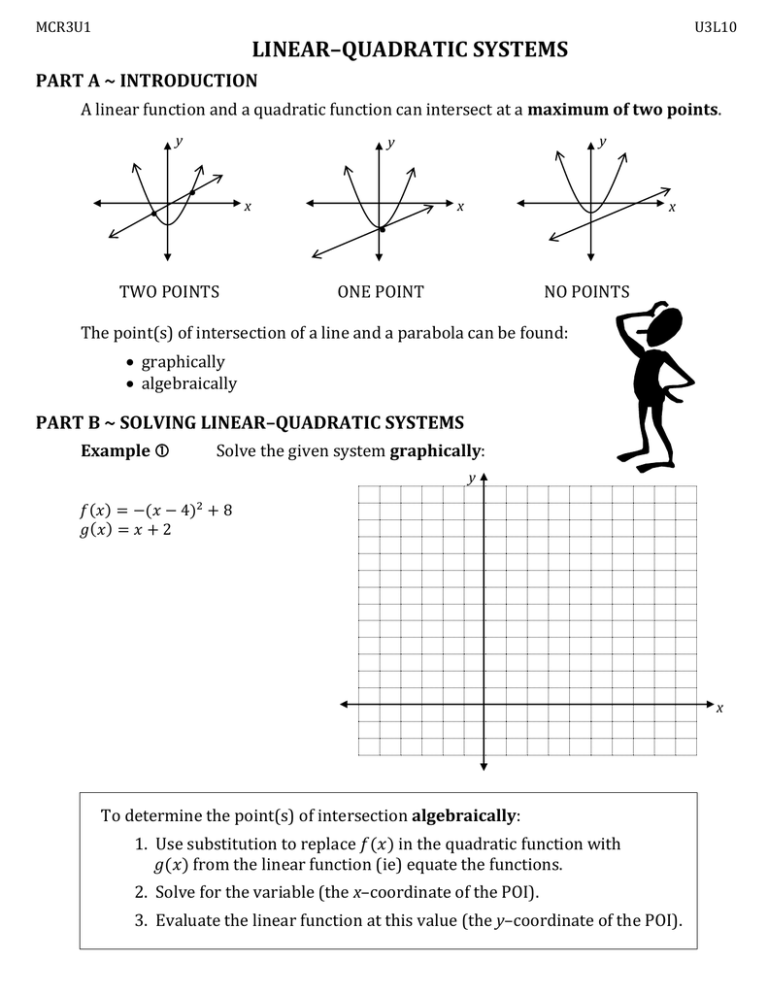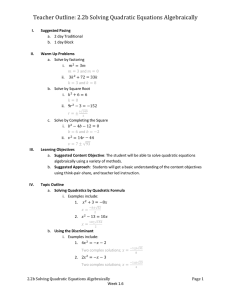LINEAR–QUADRATIC SYSTEMS PART A ~ INTRODUCTION
advertisement

MCR3U1 U3L10 LINEAR–QUADRATIC SYSTEMS PART A ~ INTRODUCTION A linear function and a quadratic function can intersect at a maximum of two points. y y y x x x TWO POINTS ONE POINT NO POINTS The point(s) of intersection of a line and a parabola can be found: graphically algebraically PART B ~ SOLVING LINEAR–QUADRATIC SYSTEMS Example Solve the given system graphically: y 𝑓 (𝑥) = −(𝑥 − 4)2 + 8 𝑔 (𝑥 ) = 𝑥 + 2 x To determine the point(s) of intersection algebraically: 1. Use substitution to replace 𝑓(𝑥) in the quadratic function with 𝑔(𝑥) from the linear function (ie) equate the functions. 2. Solve for the variable (the x–coordinate of the POI). 3. Evaluate the linear function at this value (the y–coordinate of the POI). MCR3U1 U3L10 Example Solve the given systems algebraically: a) 𝑓 (𝑥) = 𝑥 2 + 5𝑥 − 7 𝑔(𝑥) = 6𝑥 + 5 b) 𝑓 (𝑥) = −𝑥 2 + 𝑥 + 3 𝑔(𝑥) = 7𝑥 + 12 Example Determine the number of point(s) of intersection of the given quadratic and linear functions using the discriminant. 𝑓 (𝑥) = 3𝑥 2 − 2𝑥 − 1 𝑔(𝑥) = −𝑥 − 6 MCR3U1 U3L10 Example A skydiver jumped from an airplane and fell freely for some time before releasing his parachute. His height, ℎ(𝑡), in metres, above the ground at any time, t, in seconds is given by: ℎ1 (𝑡 ) = −4.9𝑡 2 + 5000 ℎ2 (𝑡 ) = −4𝑡 + 4000 (before releasing parachute) (after releasing parachute) a) Determine how long after jumping the parachute was released. b) Determine how high above the ground the skydiver was at that time. HOMEWORK: p.198–199 #1a, 2a, 3, 4ac, 6, 8, 10, 11 (Think!), 13





